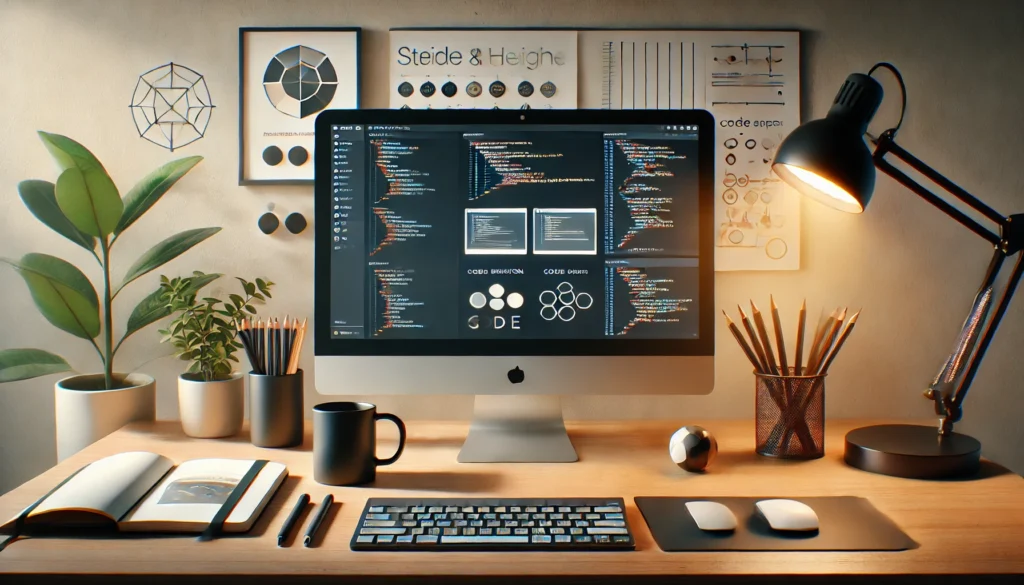How to Start a Career in Web Design & Development

Starting a career in web design and development can be exciting and rewarding. It’s a field where creativity meets technology, and there’s a high demand for skilled professionals. Here at ITXperts, we’ve been helping individuals and businesses harness the power of the web since 2015, and we know what it takes to get started in this field. Let’s dive into the steps to launch a successful career in web design and development.
1. Understand the Basics of Web Design and Development
Before diving into the technical skills, it’s essential to understand the field’s fundamental aspects:
- Web Design: Focuses on the look and feel of a website. It involves creating layouts, color schemes, and typography that enhance user experience (UX).
- Web Development: Involves building and coding the design using programming languages and frameworks to create a functional website.
A successful web professional often has a blend of both design and development skills, but many choose to specialize in one area.
2. Develop Key Technical Skills
A solid skillset is the foundation of any career in web design and development. Here are the essentials to get started:
- HTML & CSS: These are the building blocks of the web. HTML structures the content, while CSS styles it.
- JavaScript: Vital for adding interactivity and enhancing user experience.
- Responsive Design: Understand how to create websites that look great on all devices, from desktops to mobile phones.
- Basic Graphic Design: Familiarity with tools like Adobe XD, Figma, or Sketch for creating mockups and visual assets.
For those focusing on development, learning a back-end language such as Python, PHP, or Ruby can open doors to more complex projects like eCommerce and database-driven applications.
3. Explore Front-End and Back-End Frameworks
Learning a few popular frameworks will streamline your workflow and make you more marketable:
- Front-End Frameworks: Bootstrap, Tailwind CSS, and React are widely used and can speed up the design process.
- Back-End Frameworks: Depending on the language you choose, explore frameworks like Django (Python), Laravel (PHP), or Express (Node.js).
Familiarity with version control systems like Git is also crucial, as most companies use it for managing code collaboratively.
4. Build a Portfolio
Your portfolio is essential for showcasing your skills to potential employers or clients. Here’s how to start:
- Practice Projects: Design and develop a few projects, like a personal website, a business landing page, or a blog.
- Contribute to Open Source: Engaging in open-source projects is a great way to gain experience and build credibility.
- Freelance Work: Offer your services on platforms like Upwork or Fiverr to build real-world experience.
5. Develop Soft Skills
While technical skills are essential, soft skills are equally important in web design and development. Focus on:
- Problem Solving: Clients or users often have specific needs that require creative, custom solutions.
- Communication: Explain complex ideas in simple terms to clients, especially if they’re not tech-savvy.
- Project Management: Time management and organizational skills are vital for juggling multiple projects.
6. Build a Network and Keep Learning
Web design and development trends evolve quickly, so staying current is essential:
- Join Web Communities: Engage with online communities like GitHub, Stack Overflow, and specialized forums.
- Attend Events: Attend webinars, workshops, or local meetups to expand your network and learn from others in the industry.
- Take Advanced Courses: Platforms like Coursera, Udacity, and ITXperts’ training modules offer advanced tutorials and projects to build your skills.
7. Consider Your Career Path
With a foundation in web design and development, you have multiple career paths to consider:
- Front-End Developer
- Back-End Developer
- Full-Stack Developer
- UX/UI Designer
- Web Designer
- Freelancer or Consultant
Consider your strengths and interests when choosing a career path, and remember that transitioning between roles is common in this field.
8. Start Applying for Jobs or Finding Clients
When you feel ready, start applying for entry-level roles or freelance gigs. Tailor your resume to highlight relevant skills and link to your portfolio so potential employers can see your work firsthand.
At ITXperts, we believe in the power of a well-structured learning journey to build a thriving career in web design and development. Whether you’re just starting out or looking to advance, take it one step at a time, and remember to keep refining your skills.
Good luck!

